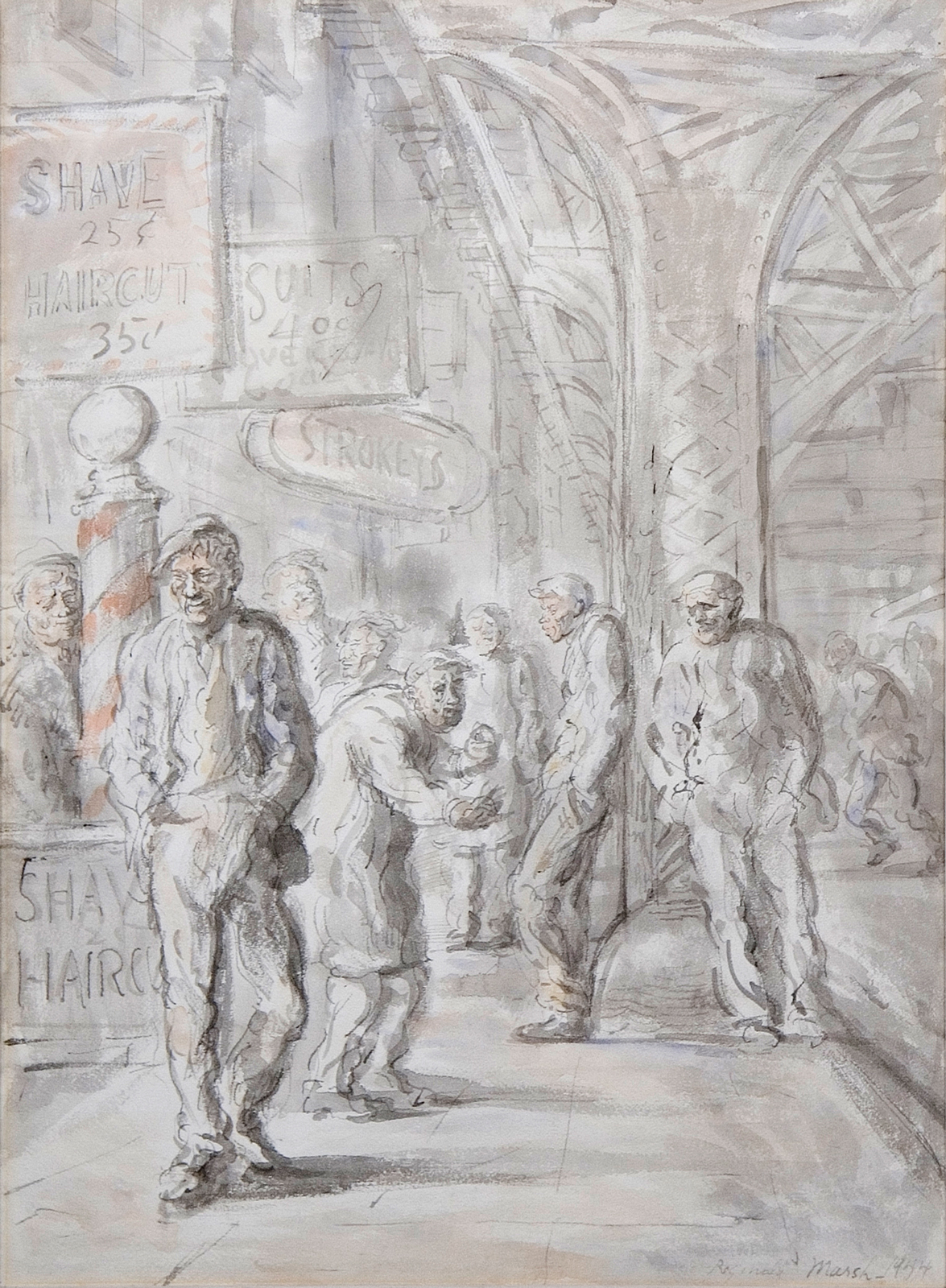Reginald Marsh
“I like to go to Coney Island because of the sea, the open air, and the crowds—crowds of people in all directions, in all positions, without clothing, moving—like the great compositions of Michelangelo and Rubens.” Reginald Marsh (1898-1954) was a Social Realist chronicler of New York City’s, applying detailed old master draftsmanship and a coolly observant eye to crowded, bawdy scenes of working class leisure and entertainment. He exaggerated faces and forms to grotesque and humorous effect; voluptuous women with clinging clothes occupied his frames so frequently they came to be known simply as “Marsh girls” and led one critic to write: “He could make the clothed human figure seem more nude than the nude itself.”
Born to two artists (one watercolorist, one muralist) in Paris in 1898, Marsh himself was a member of the upper class. His family returned to the U.S. in 1900, raising him in Nutley, New Jersey. He attended Yale from 1916 to 1920, acting as the Yale Record’s art editor and illustrator, then moved to New York City upon graduation, continuing his illustration work for publications like Vanity Fair, Esquire, and Harper’s Bazaar. He was also one of the original cartoonists for The New Yorker.
Though Marsh had no designs on becoming a painter, he took classes off and on at the Art Students League — Kenneth Hayes Miller and Thomas Hart Benton both became mentors, the former telling him “sex is your theme” and urging him to document urban life, the latter introducing him to egg tempera, which became his favored medium through the 1930s. A 1925 trip to Europe where he encountered works by Rubens, Michelangelo, Dürer, and Rembrandt cemented his unique blend of technical mastery (particularly his grasp of anatomy and knack for creating dynamic tableaus out of teeming masses) with shadowy realism.
He returned to New York and set up a studio on 14th Street in Union Square, watching the city from a telescope. He sought out cinemas, subways, burlesque shows — anywhere with spectacle or an interesting crowd — in Greenwich Village, the Bowery, and Coney Island. He taught at the Art Students League starting in 1935, where Roy Lichtenstein was a student, as well as the Moore Institute of Art in Philadelphia. Today his works are held in collections like the Met and Whitney Museum.
